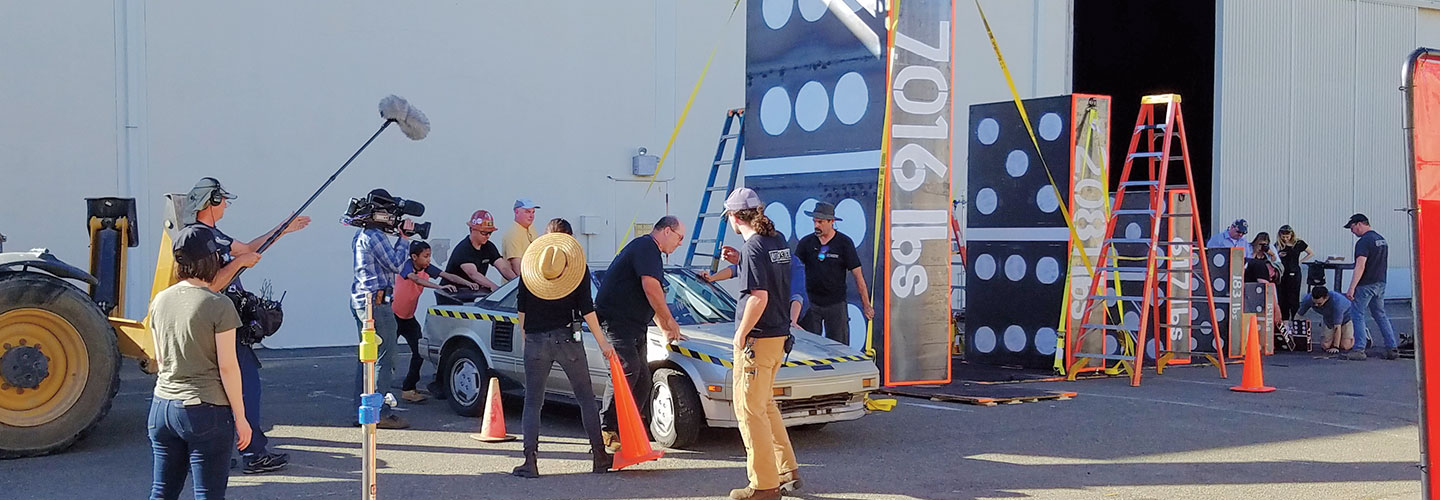Adam Savage zips past on an electric skateboard. Nearby, several cameras follow a teenager who is explaining how a domino could crush a car. A drone carrying a camera buzzes loudly in the sky. Welcome to the set of MythBusters Jr.!
This summer, I got to visit the set of MythBusters Jr. It’s the newest version of the hit television show MythBusters, which tested myths, rumors, and internet beliefs from 2003 to 2016.
Adam Savage zips along on an electric skateboard. Nearby, several cameras follow a teenager. The teen is explaining how a domino could crush a car. A drone carrying a camera buzzes in the sky. Welcome to the set of MythBusters Jr.!
This summer, I got to visit the set of MythBusters Jr. It's the newest version of the hit television show MythBusters. The show tested myths, rumors, and internet beliefs from 2003 to 2016.

